
All categories
Featured selections
Trade Assurance
Buyer Central
Help Center
Get the app
Become a supplier

(1936 products available)
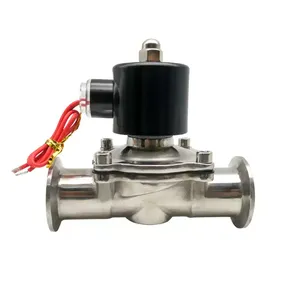


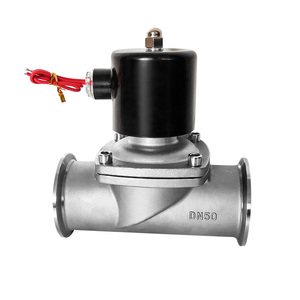


















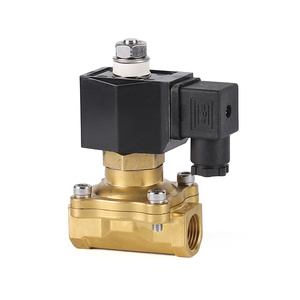



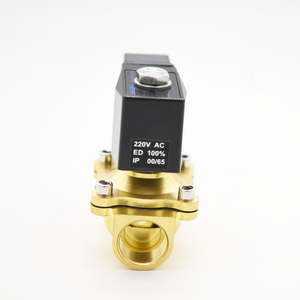

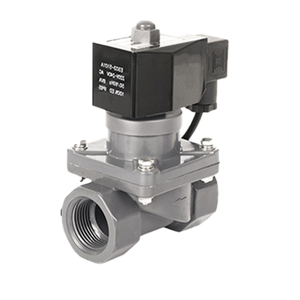


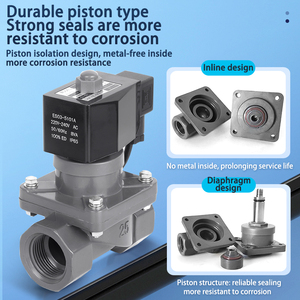
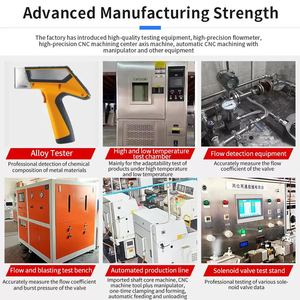

In the expansive chemical sector, solenoid chemical valves play a crucial part in controlling fluid movement. These valves ensure operational safety, efficiency, and process reliability amidst handling various corrosive and hazardous substances.
Let's delve into the diverse types of solenoid valves tailored for the unique demands of the chemical industry.
The 2/2NC solenoid valve is highly regarded for its reliability and simplicity, standing out for its straightforward on/off functionality. This valve remains closed without power, hence utilizing in situations where preventing fluid leakage is critical. It's robust construction makes it suitable for handling diverse flows, serving as a prime option for basic chemical process tasks. With low power usage, these valves are favored in many standalone systems requiring dependable, low-maintenance control.
In contrast to the NC valve, the 2/2NO solenoid valve is designed to allow flow when energized, closing the pathway when not. This feature makes it valuable in processes requiring safe venting or purging of chemicals. Though used in fewer applications than NC valves, energy savings and effective chemical management have gained traction in specialized operations. Resistance to chemical corrosion typically characterizes these valves, ensuring longevity in demanding environments.
The 4/2 solenoid valve is indispensable for the chemical industry, prominently utilized in pneumatic systems. This valve possesses the capability to alternate between two chambers while exhausting the other two, thus playing a critical role in controlling actuators and enhancing system fluidity. Its versatility is evident in functions such as smooth directional control of fluids or gases. Furthermore, the 4/2 valve is commonly employed in automatic chemical mixing, making it essential where precision and timing are paramount for reactions and fluid combining.
Similarly, the 4/3 solenoid valve is well-suited for the chemical sector, where dynamic control of actuators and fluid flow is essential. This valve can direct flow to different actuator ports while venting the others, adding versatility to machinery. Its functionality in recycling systems enhances efficiency in operations requiring fluid movement reversal. Designed with durability to withstand corrosive substances, it is a favored choice for dynamic processes.
Solenoid valves in the chemical sector must be robust and precise due to the intricate nature of managing diverse fluids and compounds. Below are key features that enhance these valves' performance, durability, and suitability.
The resilience of solenoid valves to varied chemicals remains the paramount feature in the chemical industry. These valves typically incorporate materials such as PTFE, PEEK, or Hastelloy, which serve to minimize degradation when exposed to aggressive acids, solvents, or bases. Given their critical role in safeguarding system integrity, these resistant materials not only ensure longevity but also uphold safety by mitigating potential leaks or failures.
Temperature and pressure ratings directly affect solenoid valves' operational limits and reliability in the chemical industry. Generally, these valves function effectively in a broad spectrum of temperatures, ranging from cryogenic to over 200°C. Concurrently, they accommodate pressure ratings that often exceed 10 bar or more, depending on application necessities. Precision-engineered materials maintain valve structural integrity amidst extreme process conditions.
Energy efficiency is an emerging feature of solenoid valves. Many contemporary designs incorporate lownies coils that ensure the valves maintain reliable operations without excessive energy consumption. This efficiency proves particularly crucial in large-scale chemical facilities where numerous valves may operate concurrently. Reduced energy usage not only results in cost savings but also minimizes heat generation, which could otherwise impact surrounding equipment.
Leak prevention is central to solenoid valves' design in the chemical sector, directly influencing safety and operational efficiency. Many modern valves integrate double-seals or other advanced sealing technologies that decrease the risk of fluid escape. This ensures not only the protection of hazardous chemicals but also the reduction of downtime associated with leaks.
Selecting suitable solenoid valves for the chemical industry involves critical considerations to ensure process safety, reliability, and efficiency. Below are essential factors that play a vital role in this selection.
Fluid compatibility stands as the most pivotal factor when choosing solenoid valves. The materials constituting the valve must be chemically resistant to the fluids or chemicals it is destined to handle. This entails analyzing the chemical composition of the fluids and pinpointing potential corrosive agents. PTFE, PEEK, and titanium are common materials that offer unparalleled resistance to harsh chemicals and high-pressure environments.
Pressure and temperature tolerances must be seamlessly accommodated by the solenoid valve to function effectively. Chemical processes often exist under extreme pressure and temperature scenarios; hence, the valve must sustain these operational conditions. Validate that the valve materials and design integrate accommodate these extremes without risking deformation or material breakdown. Manufacturers typically indicate these ratings, so selecting a valve that falls within the necessary operational range is vital.
In the chemical industry, adhering to industry standards and certifications is fundamental in selecting solenoid valves. Many chemical plants operate under rigorous safety and environmental policies. Valves meeting such standards, including ISO and API, provide an extra layer of assurance in their performance reliability. Moreover, these certifications frequently entail rigorous testing for durability, precision, and resistance to leaks, ensuring that the valve meets the required safety measures in high-stakes environments.
The specific function of the solenoid valve within an application has a notable influence on the selection. For example, valves applied in safety relief tasks will need distinct performance characteristics than those employed in shut-off operations. Considerations such as switching speed, coil configuration, and power ratings are essential for satisfying operational needs. These application-specific factors ensure the valve delivers precise control and responsiveness in dynamic chemical processing environments.
A1: The lifespan of these valves fluctuates based on factors like valve type, chemical exposure, and operational stress. Yet, it is commonly anticipated that these valves last between 5 and 10 years. Maintenance activities contribute to increased durability. In addition, properly designed valves that correlate with operational conditions experience extended service times.
A2: Indeed, contemporary solenoid valves utilize advanced materials such as PTFE and titanium, which denote exceptional resistance against strong acids and solvents. These materials hinder rapid corrosion, enhancing the valve's operational reliability in adverse chemical settings. Proper material selection for specific chemicals ensures longevity and safety.
A3: Energy efficiency proves significantly important in large-scale operations, particularly since numerous valves function simultaneously; minor energy savings accumulate remarkably. Reduced power consumption mitigates operational costs and lessens heat generation, which could affect adjacent systems. Thus, selecting low-wattage coils contributes to overall process efficiency.
A4: Several factors determine the right valve size: flow rate, line size, and fluid viscosity. Valve sizing entails balancing pressure drops against system requirements. Manufacturers provide guidelines that facilitate selecting the appropriate size based on operational parameters, ensuring precise control and preventing system disruptions.
A5: Certifications like ISO and API provide benchmarks of valve performance and reliability. These test outcomes reveal durability, leak resistance, and operational safety. Plants often depend on validated components to comply with legal and safety regulations. Therefore, certified valves ensure reliance on performance.